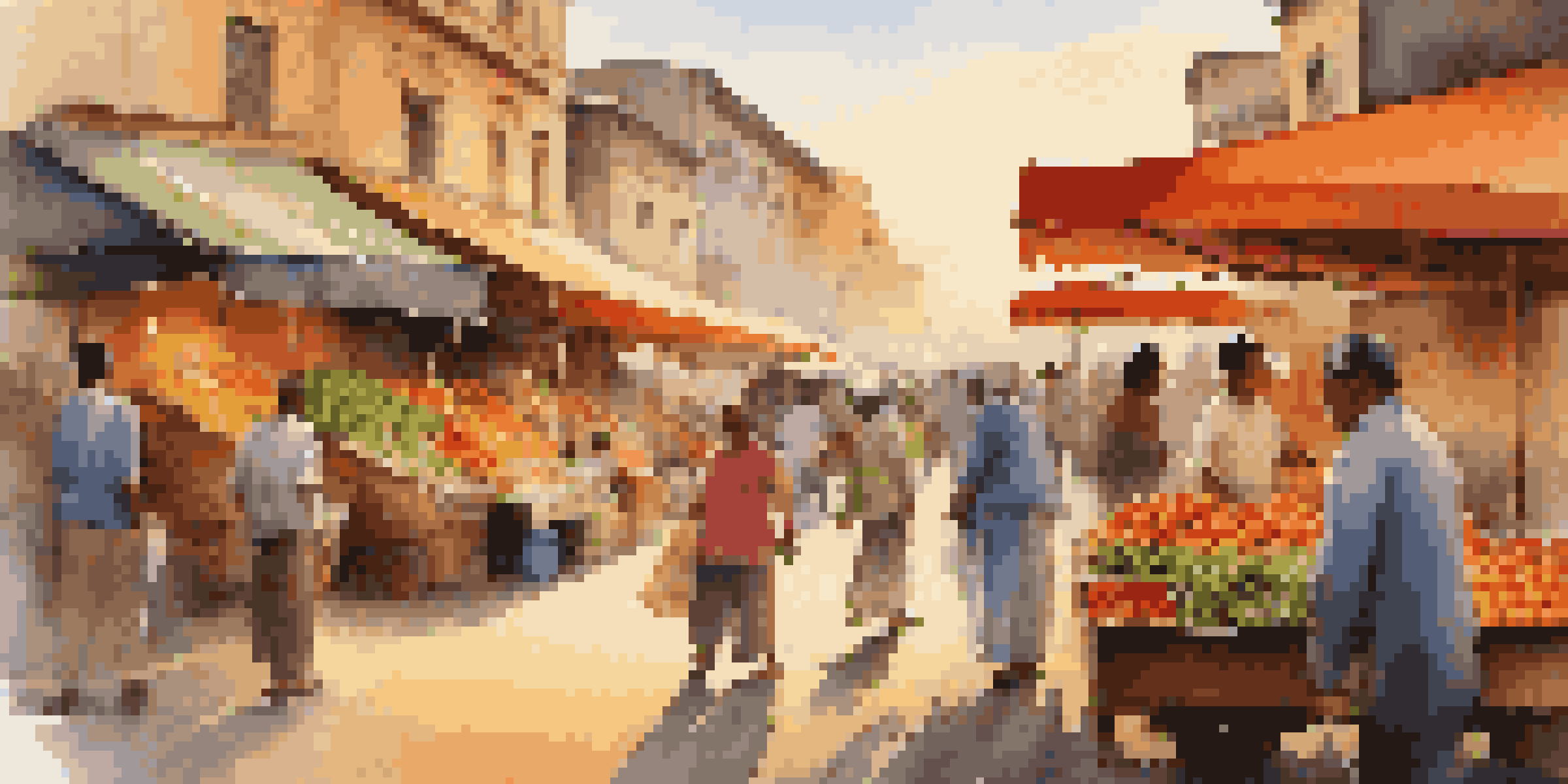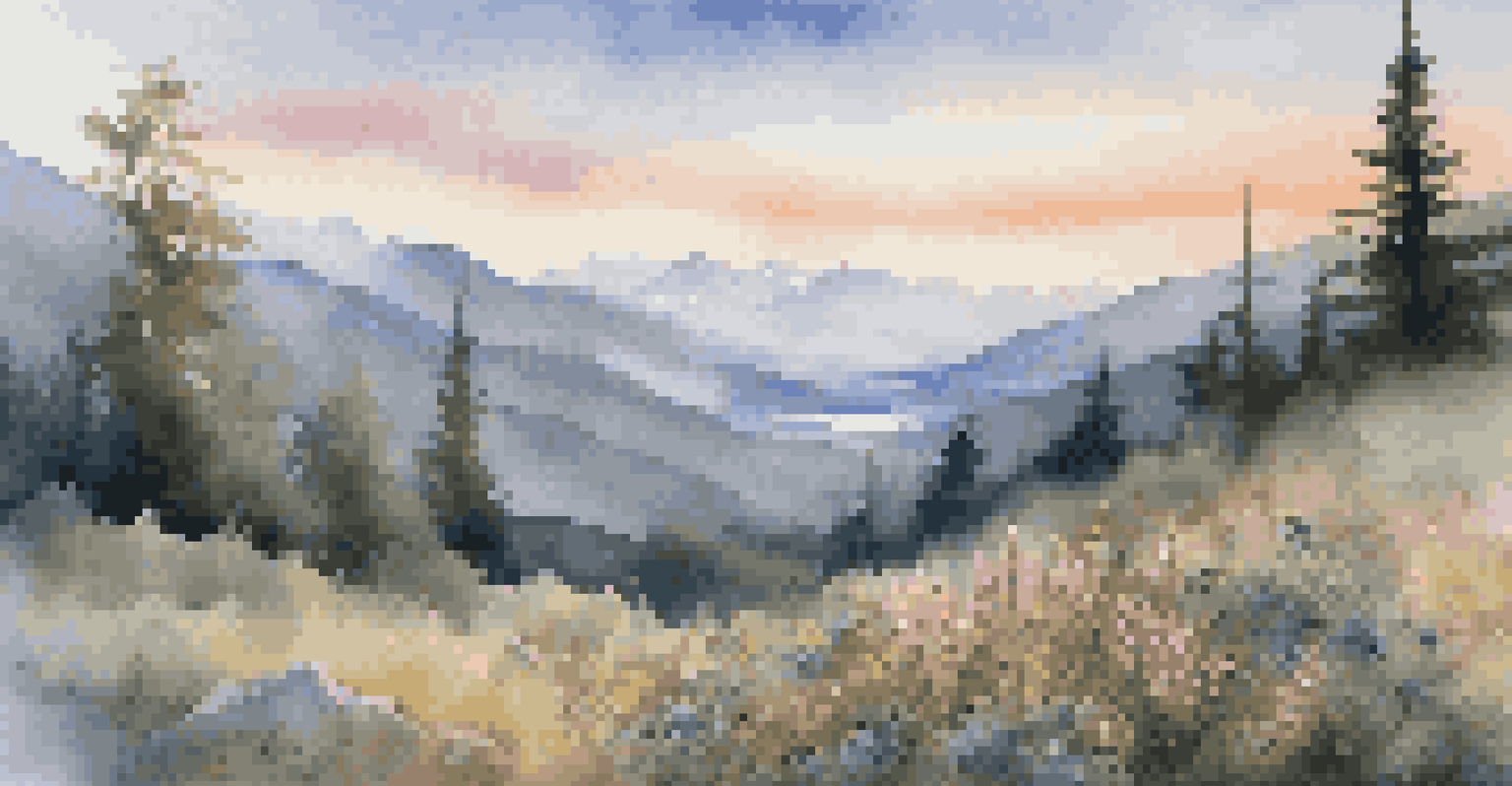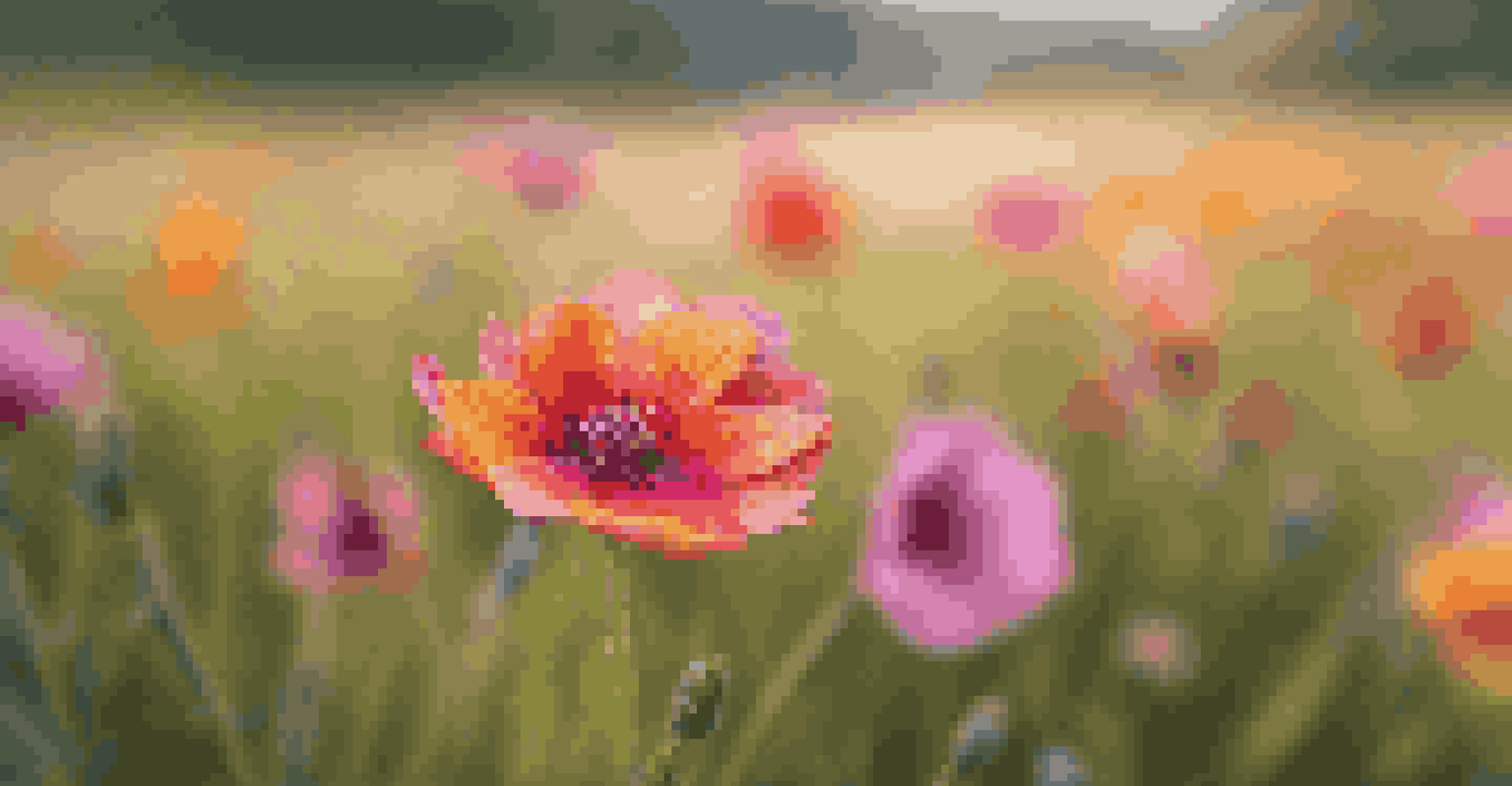Understanding Depth of Field in Travel Photography

What is Depth of Field and Why It Matters
Depth of field (DoF) refers to the range of distance in a photo that appears sharp. Understanding DoF is crucial in travel photography because it allows you to emphasize your subject while blurring distractions in the background. This technique can transform a simple snapshot into a captivating image that tells a story.
Depth of field is a powerful tool, allowing you to guide the viewer's eye and create a story within your photograph.
For instance, imagine capturing a vibrant market scene. By using a shallow depth of field, you can focus on a local vendor while softly blurring the bustling crowd behind them. This not only highlights the subject but also creates an emotional connection with the viewer.
Ultimately, mastering DoF helps you convey your travel experiences more effectively, making your photos not just visual records, but compelling narratives.
Understanding Shallow vs. Deep Depth of Field
Depth of field can be categorized into shallow and deep. A shallow depth of field means only a small part of the photo is in focus, ideal for portraits or close-up shots. In contrast, a deep depth of field keeps most of the scene in focus, which is perfect for landscapes or architectural shots.

For example, when photographing a stunning mountain range, a deep depth of field allows every detail from the foreground to the background to shine. This makes the viewer feel immersed in the scene, as if they are experiencing the landscape firsthand.
Understanding Depth of Field's Importance
Depth of field enhances travel photography by allowing you to focus on your subject while blurring distracting backgrounds.
Conversely, if you want to highlight a colorful flower in a vast field, a shallow depth of field isolates the bloom, drawing attention to its beauty while softening the distracting background.
The Role of Aperture in Depth of Field
Aperture plays a significant role in determining depth of field. It refers to the opening in a lens that lets light in, and is measured in f-stops. A lower f-stop number (like f/2.8) results in a wider opening, creating a shallow depth of field, while a higher number (like f/16) results in a smaller opening, yielding a deeper depth of field.
Photography is the story I fail to put into words.
When traveling, knowing how to adjust your aperture can dramatically change your photos. If you’re in a busy street market and want to capture a vendor's smile without distractions, a wide aperture will help you achieve that blurred background effect.
On the other hand, if you find yourself in front of a breathtaking vista, a smaller aperture will ensure that the entire scene is sharp, allowing every detail to be appreciated.
Focal Length and Its Impact on Depth of Field
Focal length, measured in millimeters (mm), also influences depth of field. A longer focal length (like 200mm) typically results in a shallower depth of field, while a shorter focal length (like 18mm) provides a deeper depth of field. This means that the lens you choose can shape how your subjects and backgrounds are portrayed.
For instance, if you're photographing wildlife on safari, a longer focal length allows you to get close to your subject while keeping the background blurred, emphasizing the animal. This technique creates a more intimate feel, enhancing the viewer's connection to the subject.
Aperture's Role in Depth of Field
Adjusting aperture settings dramatically influences depth of field, helping to isolate subjects or ensure detailed landscapes.
In contrast, when capturing a panoramic view of a city skyline, a shorter focal length will help ensure that both the foreground and the distant buildings are crisp and clear, providing a more comprehensive view.
Using Depth of Field for Compositional Techniques
Depth of field isn't just about technical settings; it’s also a powerful compositional tool. You can strategically use DoF to lead the viewer’s eye to the most important part of your photograph. By controlling what is in focus, you can tell a more compelling story.
For example, if you're photographing a winding road leading to a mountain, using a deep depth of field keeps both the road and the mountain in focus, creating a sense of depth and inviting the viewer to explore the scene. This technique helps to convey the journey aspect of travel.
Conversely, blurring the foreground while keeping the background sharp can create a sense of mystery, urging viewers to wonder what lies ahead.
Practical Tips for Achieving Desired Depth of Field
To achieve your desired depth of field, consider experimenting with your camera settings. Start by using aperture priority mode, which allows you to set the aperture while the camera selects the appropriate shutter speed. This is especially useful in dynamic travel situations.
Additionally, try different distances from your subject. The closer you are, the shallower your depth of field will be, which can be very effective for close-up shots. Practice this technique with different subjects to see how it alters the visual storytelling of your photos.
Practice for Mastery of Depth of Field
Experimenting with different settings and compositions is key to mastering depth of field and improving your photographic storytelling.
Finally, don't forget to check your focus points. Modern cameras allow you to select where you want to focus, which can enhance your control over depth of field and improve your overall composition.
Editing to Enhance Depth of Field
Post-processing can also enhance depth of field in your travel photos. Software like Adobe Lightroom or Photoshop allows you to adjust sharpness and blur selectively, giving you more control over the depth of field effect you want to achieve after the shot.
For example, if you find that a shot is too busy, you can blur the background further in editing, enhancing the effect of a shallow depth of field. This can be particularly useful when working with travel photos that capture busy scenes.

However, be cautious not to overdo it—subtlety is key. The best enhancements are those that feel natural and maintain the integrity of your original photograph.
Practice Makes Perfect: Experimenting with Depth of Field
The best way to master depth of field is through practice. Take your camera out on your next travel adventure and experiment with various settings, subjects, and compositions. The more you shoot, the more you'll understand how to manipulate depth of field to suit your vision.
Set challenges for yourself: try capturing a scene with both shallow and deep depth of field and see how the mood changes. This hands-on experience will deepen your understanding and improve your confidence when photographing.
Remember, every photographer develops their unique style. Use depth of field not just as a technical tool, but as a means to express your personal storytelling through images.